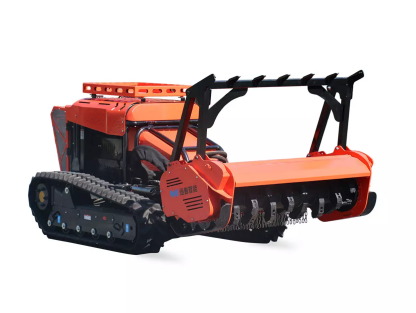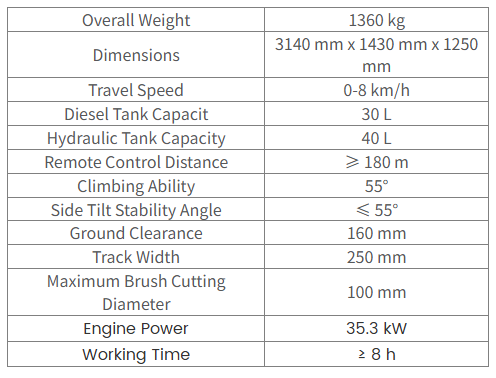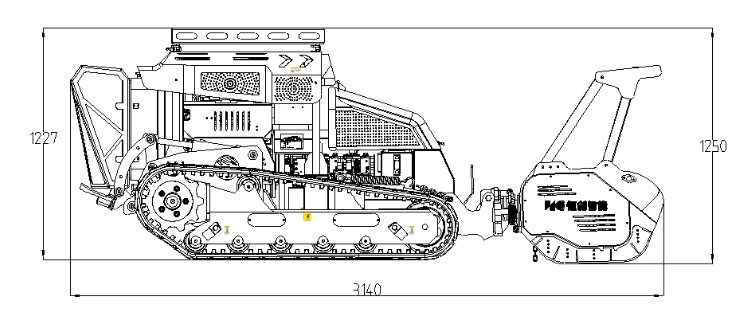
Forestry mulching is a land-clearing method that has gained popularity for its efficiency, environmental benefits, and versatility. Unlike traditional land-clearing techniques—which often involve bulldozers, burning, or hauling debris—forestry mulching uses specialized machinery to grind vegetation into nutrient-rich mulch. This process not only clears land but also enriches the soil, suppresses weed growth, and minimizes erosion. In this article, we’ll explore how forestry mulching works, the equipment involved, costs, and its applications in both residential and commercial settings.
A forestry mulcher is a heavy-duty machine designed to shred trees, brush, stumps, and other vegetation into fine mulch. This equipment is used for:
Land Clearing: Preparing sites for construction, agriculture, or landscaping.
Invasive Species Control: Removing unwanted plants without herbicides.
Wildfire Prevention: Reducing fuel loads by eliminating dense undergrowth.
Trail Maintenance: Creating pathways in parks or forests.
Erosion Control: Stabilizing soil by leaving mulch as a protective layer.
Forestry mulchers are employed in diverse environments, from residential backyards to large-scale commercial projects. Their ability to work in tight spaces (thanks to attachments like mini excavator forestry mulchers) or rugged terrain (using remote-control models) makes them indispensable.


Forestry mulching equipment varies in size, power, and design. Here are the most common types:
Remote Control Forestry Mulchers
These compact, agile machines are ideal for steep slopes or hazardous areas. Operators control them from a safe distance, making them perfect for difficult terrain. Examples include the remote control brush mulcher and remote controlled forestry mulcher.
Excavator-Mounted Mulchers
Attached to excavators, these mulchers (e.g., forestry mulcher for excavator) offer precision and power. They’re used for large-scale projects, such as clearing right-of-ways or processing heavy timber.
3-Point Forestry Mulchers
Designed to attach to tractors via a three-point hitch, these are cost-effective for smaller farms or residential properties.
Stand-Alone Mulching Machines
Heavy-duty dedicated mulchers, like forestry mulching machines, are built for efficiency in commercial forestry operations.
Mini Excavator Mulchers
Compact yet powerful, these are suited for residential projects or tight spaces where larger equipment can’t maneuver.
A forestry mulcher operates using a rotating drum equipped with steel teeth or blades. Here’s the step-by-step process:
Vegetation Engagement: The machine’s drum spins at high speeds, striking trees, brush, or stumps.
Shredding: Sharp teeth grind vegetation into small chips.
Mulch Distribution: The mulch is ejected onto the ground, creating a layer that retains moisture and prevents erosion.
Horsepower Requirements
Most forestry mulchers require between 50 to 500+ horsepower, depending on the model. Smaller residential units (like mini excavator attachments) may use 50–100 HP, while commercial-grade mulchers need 300+ HP to handle dense forests.
1. Forestry Mulching Services
Professional services charge between 500 per hour, depending on:
Terrain complexity.
Vegetation density.
Project size.
Residential forestry mulching for a 1-acre lot might cost 3,000, while commercial forestry mulching for large plots can exceed $10,000.
2. Equipment Costs
Remote control mulcher for sale: 200,000+.
Forestry mulcher for excavator: 50,000 (attachment only).
3-point forestry mulcher: 30,000.
3. Rentals
Renting a forestry mulcher costs 2,500 per day, depending on size and capabilities.
Pros:
Eco-Friendly: No burning or landfill waste.
Time-Efficient: Clears and mulches in one pass.
Soil Health: Mulch acts as natural fertilizer.
Cons:
High Initial Cost: Purchasing equipment is pricey.
Maintenance: Blades and teeth require regular replacement.
For frequent use, investing in a forestry mulcher for sale makes sense. For occasional projects, hiring forestry mulching services or opting for forestry mulcher rentals is more economical.
When selecting a provider, consider:
Experience with residential or commercial forestry mulching.
Equipment variety (e.g., remote control mulcher, excavator attachments).
Reviews and pricing transparency.
Top forestry mulching companies often offer free estimates and tailored solutions.
Q: What is the difference between commercial and residential forestry mulching?
A: Commercial projects are larger and require heavy-duty equipment, while residential jobs use smaller machines like mini excavator mulchers.
Q: Can I rent a forestry mulcher?
A: Yes! Many companies offer forestry mulcher rentals starting at $800/day.
Q: How long does forestry mulching take?
A: A 1-acre plot typically takes 4–8 hours, depending on vegetation.
Q: Does mulching prevent regrowth?
A: Yes—the mulch layer suppresses weeds, though some maintenance may be needed.
Forestry mulching is a sustainable, efficient solution for land management. Whether you’re a homeowner tackling overgrown brush or a developer preparing a construction site, understanding the types of equipment, costs, and benefits ensures you make informed decisions. From remote control brush mulchers to 3-point tractor attachments, the right machinery can transform challenging projects into manageable tasks. For those unsure about investing, forestry mulching companies provide expert services to meet any need.
By embracing this method, you’re not just clearing land—you’re fostering healthier ecosystems and more resilient landscapes.